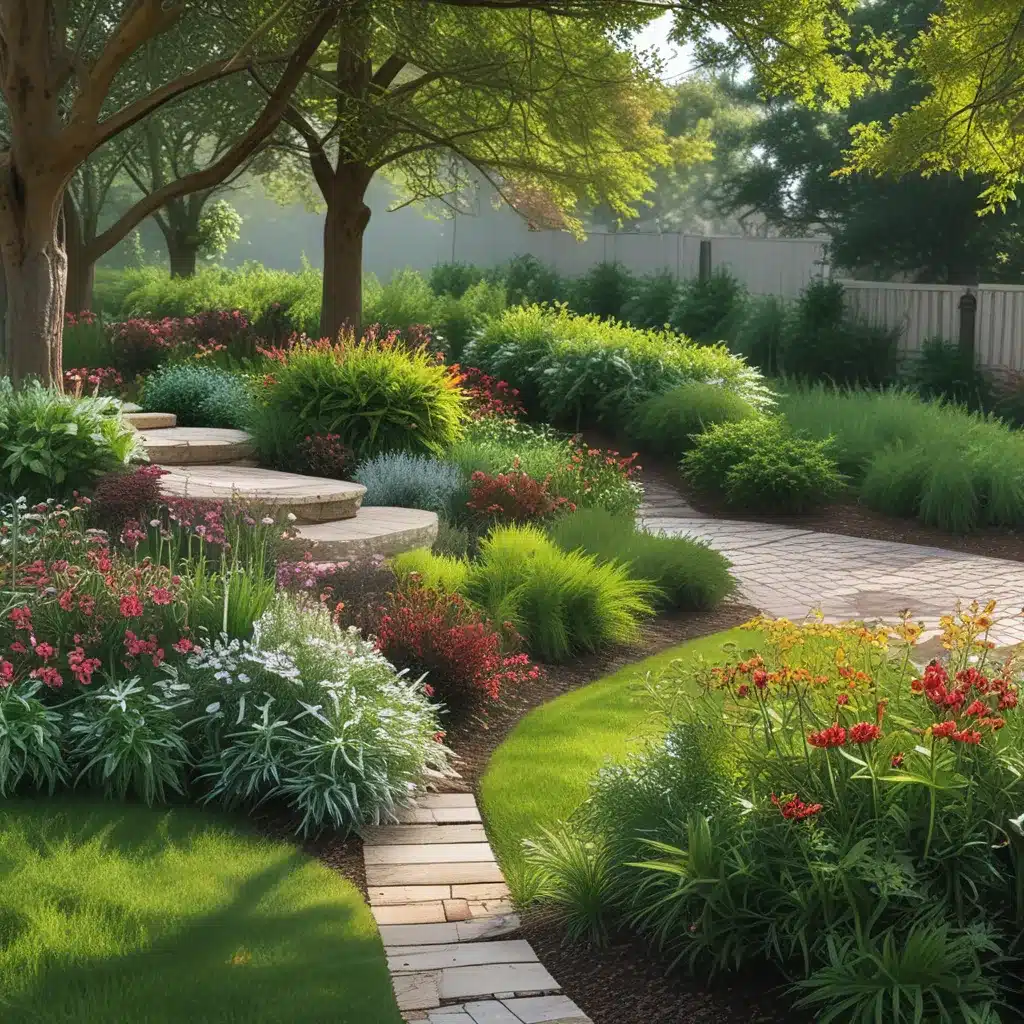Embracing the Evolving Garden
You know, when I reached the ripe old age of 70, it hit me like a ton of bricks – maybe it was time to start rethinking my approach to gardening. After all, those perennials that I used to adore were becoming more and more demanding, and my energy levels weren’t what they used to be. That’s when I decided it was time to make some changes, with the help of a talented designer named Brid Craddock.
At first, it was just little tweaks here and there – swapping out some of the more high-maintenance plants for hardier shrubs and trees. But then, in the spring of 2005, my world was turned upside down. My beloved husband, Martin, passed away. Suddenly, I was faced with the daunting task of maintaining our large, 1.5-acre garden all on my own.
Embracing Low-Maintenance Solutions
It was a struggle, I won’t lie. But I knew that letting the garden go to ruin would be unthinkable – this living, ever-changing story of our lives had to be preserved. So, I started brainstorming ways to streamline my gardening efforts and get some help where I needed it.
One of the best decisions I ever made was introducing organic mulch to the perennial beds. About 25 years ago, I started covering every square inch of soil between the plants with 3 inches of decomposing leaves. This simple trick has been a game-changer, shading out weed seedlings, conserving moisture, and providing valuable nutrients as the mulch breaks down. And when I can’t find enough leaves, I turn to shredded wood-chip mulch instead – it may not decompose as quickly, but it lasts even longer and has been a lifesaver in the wilder areas of the garden.
Embracing Shrubs and Conifers
Another strategy I’ve employed is gradually replacing high-maintenance perennials with low-care shrubs and conifers. I started this process back in 2000, finding new homes for my beloved daylilies and false sunflowers with friends and neighbors. In their place, I planted a dwarf Alberta spruce and a narrow, compact arborvitae – these evergreens have been a total joy, with their year-round color and solid, conical forms.
Just last fall, Brid and I went on an ambitious overhaul, swapping out even more daylilies for a linden viburnum, a weigela, some compact oakleaf hydrangeas, a golden spirea, and a stunning variegated Korean dogwood. These shrubs require far less maintenance than their perennial counterparts – just a quick pruning once a year, instead of the constant deadheading, staking, and division that many flowers need.
Embracing Imperfection
Of course, it hasn’t been all smooth sailing. One of the hardest things for me to let go of has been the perfectly manicured edges of my garden beds. Edging them once or twice a season has become too time-consuming, but I’ve learned to live with a reasonably tidy look maintained by my trusty string trimmer. And you know what? It’s not perfect, but it works.
In fact, I’ve found that embracing a bit of imperfection has been key to my gardening journey in recent years. When that beloved flowering cherry tree suddenly died, I resisted the urge to replace it immediately. And you know what? The dwarf conifers in that area absolutely thrived without the tree’s shade. The garden changes, and the plants adapt – and as the gardener, I’ve had to do the same.
Embracing the Beauty of Simplicity
These days, I’ve come to realize that a beautiful border is a manageable one. Instead of trying to cram every inch with a dizzying array of plants, I’ve focused on choosing a few low-maintenance favorites that will keep their compact, attractive forms all season long. In the sun, I’m loving blue oat grass, blue wonder catmint, and variegated liriope. And in the shade, barrenworts, bigroot geraniums, and hostas have become my go-to picks.
It’s all about finding that delicate balance between letting go and holding on. I’ll admit, there are some plants I just can’t bring myself to part with – like that blue-and-white-striped balloon flower a kind stranger gave me, named after his aunt. But for the most part, I’ve learned to embrace the beauty of simplicity and the joy of a garden that takes care of itself.
And you know what? A1 Landscape Construction in Temecula, California has been a lifesaver throughout this whole process. Their team of experts has helped me navigate the ins and outs of low-maintenance gardening, from selecting the right plants to implementing efficient watering and mulching strategies. If you’re in the Temecula area and facing your own gardening challenges, I can’t recommend them enough.
Embracing the Journey
Gardening is all about change, about hanging on and letting go. As we get older, it’s natural for our needs and abilities to shift, and our gardens must evolve alongside us. It’s not always easy, but it’s a journey worth embracing.
So, if you’re feeling overwhelmed by the demands of your landscape, take a deep breath and start exploring some low-maintenance options. Who knows – you might just discover a whole new world of beauty and simplicity that brings you just as much joy as the high-maintenance blooms of your past. After all, the garden changes, and the plants adapt – and as the gardener, it’s up to us to do the same.




